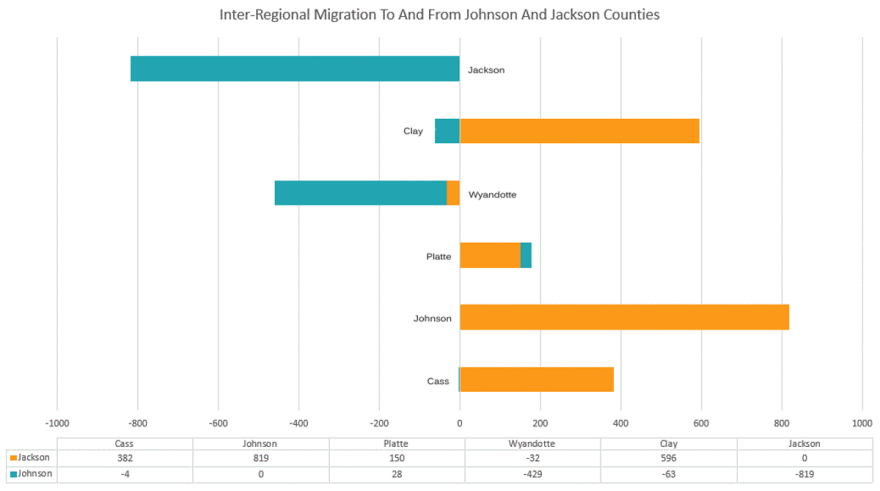About 2 million people live in the Kansas City metropolitan area.
The region is almost equally divided by the Kansas-Missouri state line geographically (land that is considered the metro) and by population. But that line doesn’t keep us from moving around a bit.
Consider that about 4,400 people moved from Jackson County, Missouri, to Johnson County, Kansas, in 2011, according to data from the Mid-America Regional Council (MARC). And nearly 3,600 moved in the opposite direction from Johnson County to Jackson County. That’s a net loss for urban Jackson County, but it’s not a one-way street.
Downtown Kansas City, Mo. (in Jackson County), is showing signs of growth, says Jeff Pinkerton, senior researcher at MARC. The non-profit association estimates about 20,000 people live downtown now — a community that wasn’t there even 15 years ago.
“Someone who maybe visited downtown Kansas City 10-15 year ago, who maybe lives in a surrounding suburban area, and then came down here today, would leave with a different impression than what they had before,” says Pinkerton, whose office is right in the heart of downtown.
MARC data on migration was collected by using the most recently available IRS records. It follows people by their Social Security number and how they file their taxes. Obviously, a lot of people don’t get counted using this approach, like people who don’t file taxes or file late. So the numbers may be higher. Indeed, Pinkerton estimates the IRS data captures about half of the actual total.
But it clearly shows, he says, that suburban counties are growing a lot faster than the urban counties — a pattern that has been going on since the 1960s and 70s. The difference now is that burgeoning suburban downtowns may be fueling growth.
“Suburban regions are starting to redevelop and find opportunities to be more attractive to younger home owners,” Pinkerton says, pointing specifically to Overland Park’s downtown and Lee’s Summit.
But back to that state line. Here’s a look at how many people moved between some Missouri-Kansas counties, based on the 2011 data collected by MARC.
- From Clay County, Missouri, to Johnson County, Kansas: 701
- From Johnson County, Kansas, to Clay County, Missouri: 638
Net gain for Johnson County: 63
- From Jackson County, Missouri, to Wyandotte County, Kansas: 1,594
- From Wyandotte County, Kansas, to Jackson County, Missouri: 1,626
Net gain for Jackson County: 32
- From Platte County, Missouri, to Johnson County, Kansas: 341
- From Johnson County, Kansas, to Platte County, Missouri: 369
Net gain for Platte County: 28
.

This story is part of KCUR's examination of how geographic borders affect our daily lives in Kansas City. KCUR will go Beyond Our Borders and spark a community conversation through social outreach and innovative journalism.
We will share the history of these lines, how the borders affect the current Kansas City experience and what’s being done to bridge or dissolve them. Be a source for Beyond Our Borders: Share your perspective and experiences on the state line with KCUR.



